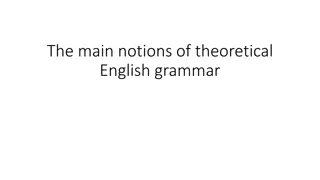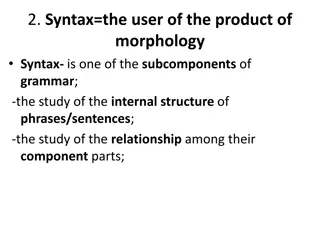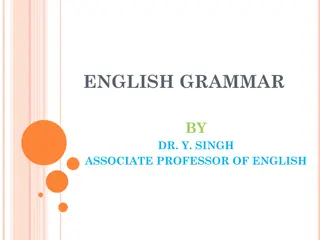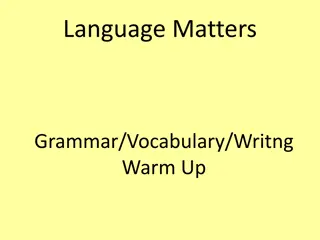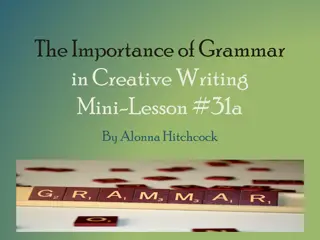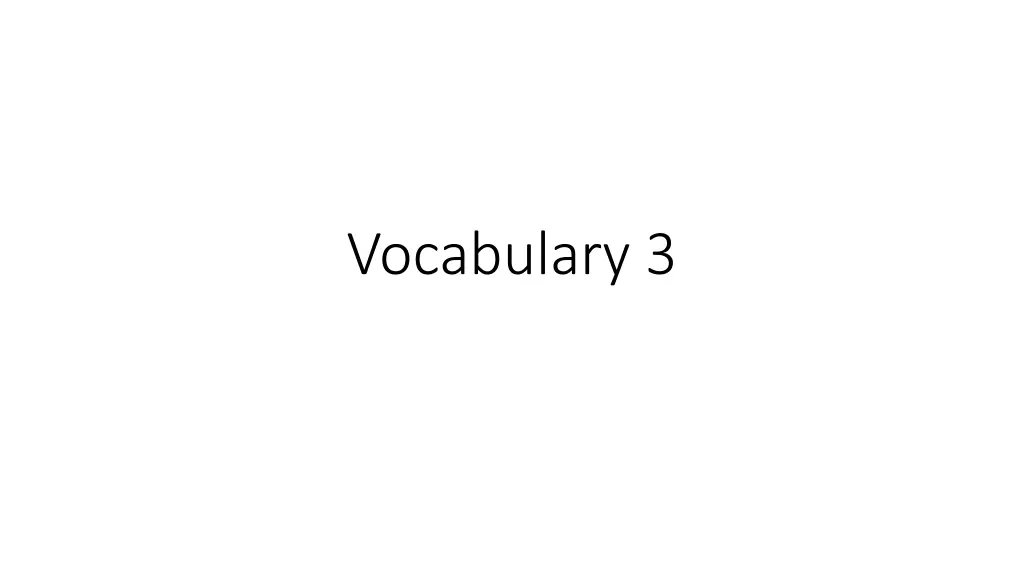
Spanish Language Learning Tips: Neuter Use of Adjectives, Para + Infinitive, Diminutives & Augmentatives
Explore the nuances of Spanish grammar with topics like the neuter use of adjectives with "lo," the usage of "para + infinitive" for expressing purpose, and the creation of diminutives and augmentatives. Practice writing sentences to solidify your understanding and enhance your Spanish language skills.
Download Presentation

Please find below an Image/Link to download the presentation.
The content on the website is provided AS IS for your information and personal use only. It may not be sold, licensed, or shared on other websites without obtaining consent from the author. If you encounter any issues during the download, it is possible that the publisher has removed the file from their server.
You are allowed to download the files provided on this website for personal or commercial use, subject to the condition that they are used lawfully. All files are the property of their respective owners.
The content on the website is provided AS IS for your information and personal use only. It may not be sold, licensed, or shared on other websites without obtaining consent from the author.
E N D
Presentation Transcript
Lo + adjective Remember lo que ? Remember that it s neuter? The same is true with lo + adjective : Lo bueno es que no hay clases. The good part is that there aren t classes. Lo triste es que Juan no est aqu . The sad thing is that Juan isn t here. If you ve ever written something like the good thing is that he succeeded in a formal English paper, your professor probably circled the word thing. That s a word to be avoided in formal writing. The good thing is that the way you say it in Spanish is perfectly acceptable formally as well as informally. This is a neuter use of the adjective, because thing isn t really a thing; it s an idea. The same thing with part. What s good? That there aren t any classes. That s an idea, as opposed to something like The movie was really good, where movie is what is good.
Para + infinitive This isn t hard to explain or understand, but it s hard to remember to use. The following sentence is perfectly grammatical: He is studying Spanish in order to be able to communicate with his clients. These days, professors will tell you to leave out in order : He is studying Spanish to be able to communicate with his clients. Also a perfectly grammatical sentence. But in Spanish, if it s possible to say, in order, para is required: Estudia para mejorar su pronunciaci n. He studies (in order) to improve his pronunciation. Lee para impresionar a la chica. He reads (in order) to impress the girl. But in order isn t always possible: It s important to study a lot. You couldn t say, It s important in order to study a lot, so you don t put para in the sentence in Spanish: Es importante estudiar mucho.
Diminutives & Augmentatives A diminutive makes something small. In English, we actually use the word little : little brother little girl But Spanish uses a suffix: hermanito *chiquita The spelling of chica changes to keep the k sound; if you left the c ( chicita ), it would sound like an s. little tree arbolito An augmentative makes something bigger: big mouth big man bocona hombr n That s it in a nutshellito. But before doing your homework, you need to go to http://www.spanish411.net/Spanish-Diminutives-Augmentatives.asp to get the picturona.
For homework, write 2 sentences with lo + adjective, 2 with para + infinitive, 2 with a diminutive, & 2 with an augmentative.

